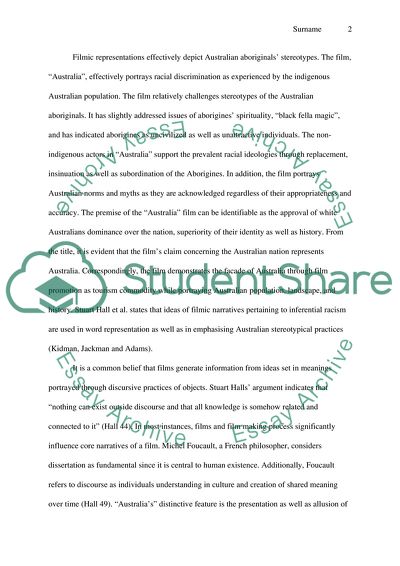Cite this document
(Stereotyping the Australian Aboriginals in Film Representation Movie Review Example | Topics and Well Written Essays - 1500 words, n.d.)
Stereotyping the Australian Aboriginals in Film Representation Movie Review Example | Topics and Well Written Essays - 1500 words. https://studentshare.org/visual-arts-film-studies/1759557-stereotyping-the-australian-aboriginals-film-australia-through-filmic-representation
Stereotyping the Australian Aboriginals in Film Representation Movie Review Example | Topics and Well Written Essays - 1500 words. https://studentshare.org/visual-arts-film-studies/1759557-stereotyping-the-australian-aboriginals-film-australia-through-filmic-representation
(Stereotyping the Australian Aboriginals in Film Representation Movie Review Example | Topics and Well Written Essays - 1500 Words)
Stereotyping the Australian Aboriginals in Film Representation Movie Review Example | Topics and Well Written Essays - 1500 Words. https://studentshare.org/visual-arts-film-studies/1759557-stereotyping-the-australian-aboriginals-film-australia-through-filmic-representation.
Stereotyping the Australian Aboriginals in Film Representation Movie Review Example | Topics and Well Written Essays - 1500 Words. https://studentshare.org/visual-arts-film-studies/1759557-stereotyping-the-australian-aboriginals-film-australia-through-filmic-representation.
“Stereotyping the Australian Aboriginals in Film Representation Movie Review Example | Topics and Well Written Essays - 1500 Words”. https://studentshare.org/visual-arts-film-studies/1759557-stereotyping-the-australian-aboriginals-film-australia-through-filmic-representation.


